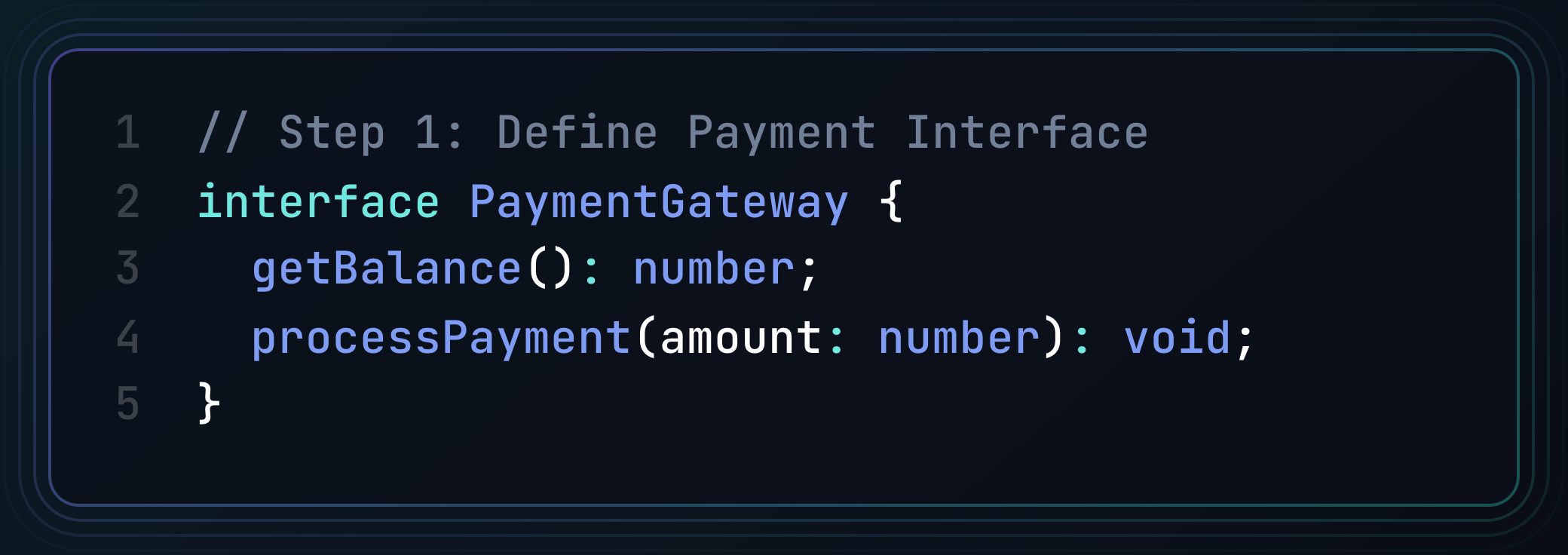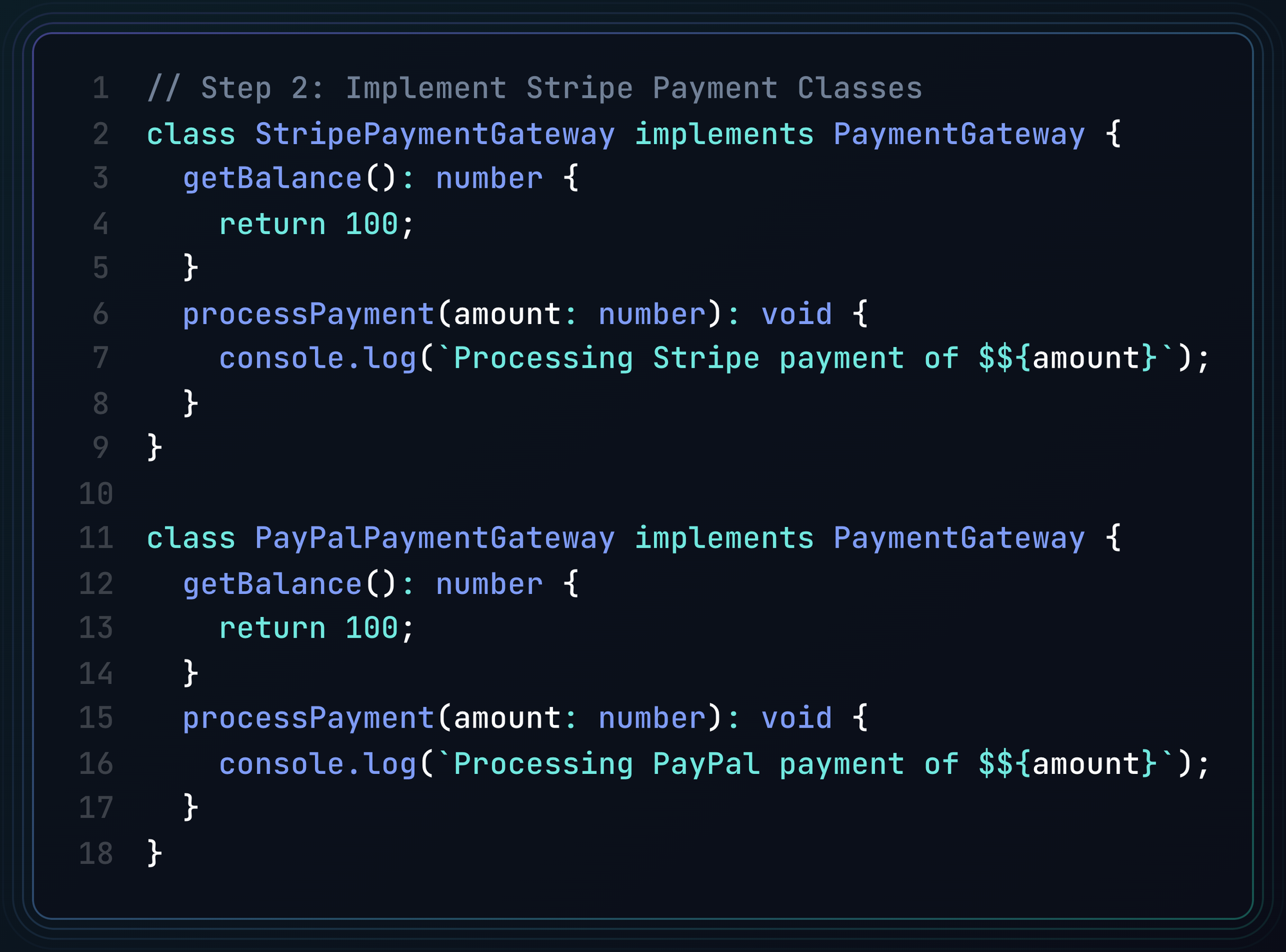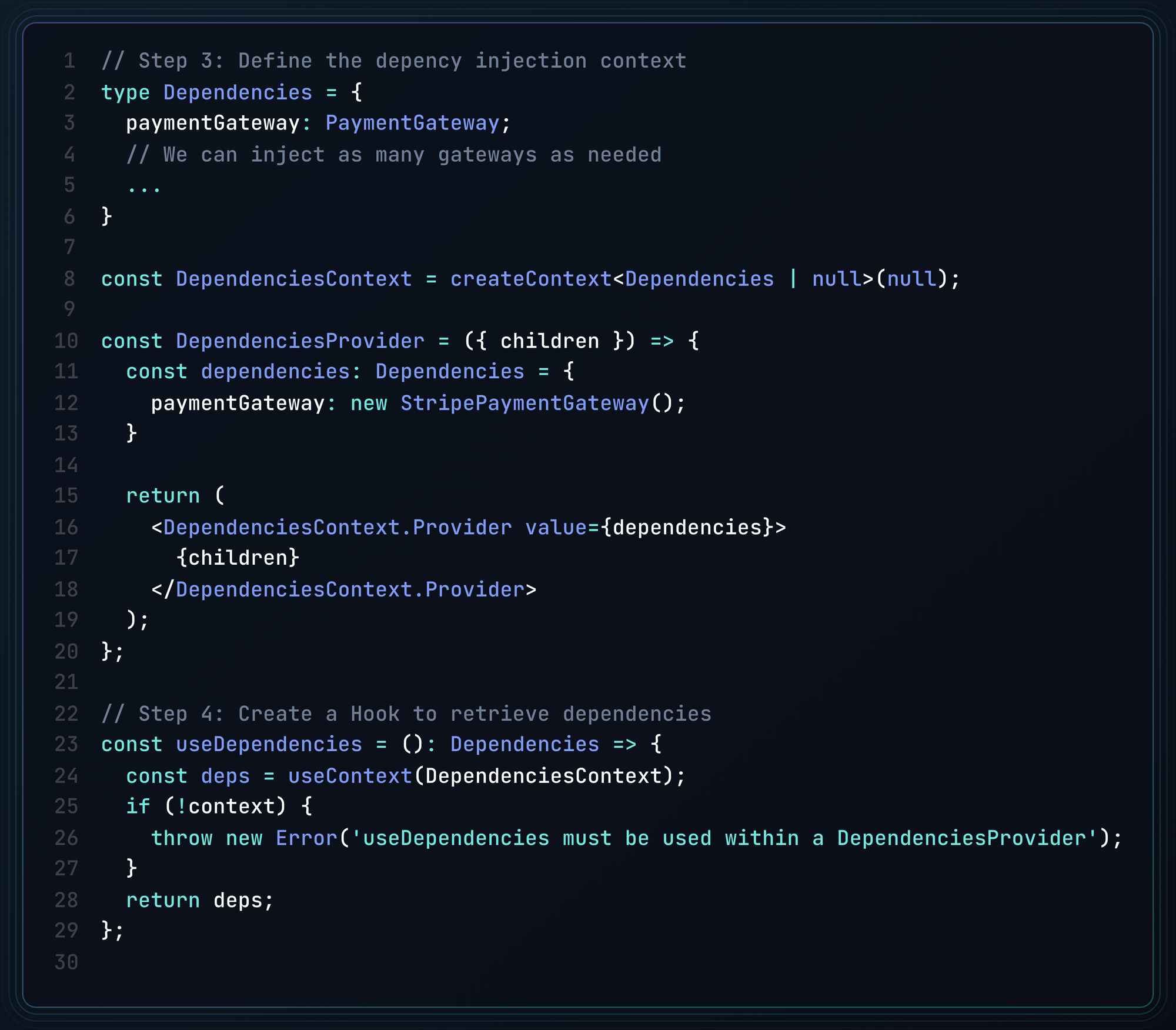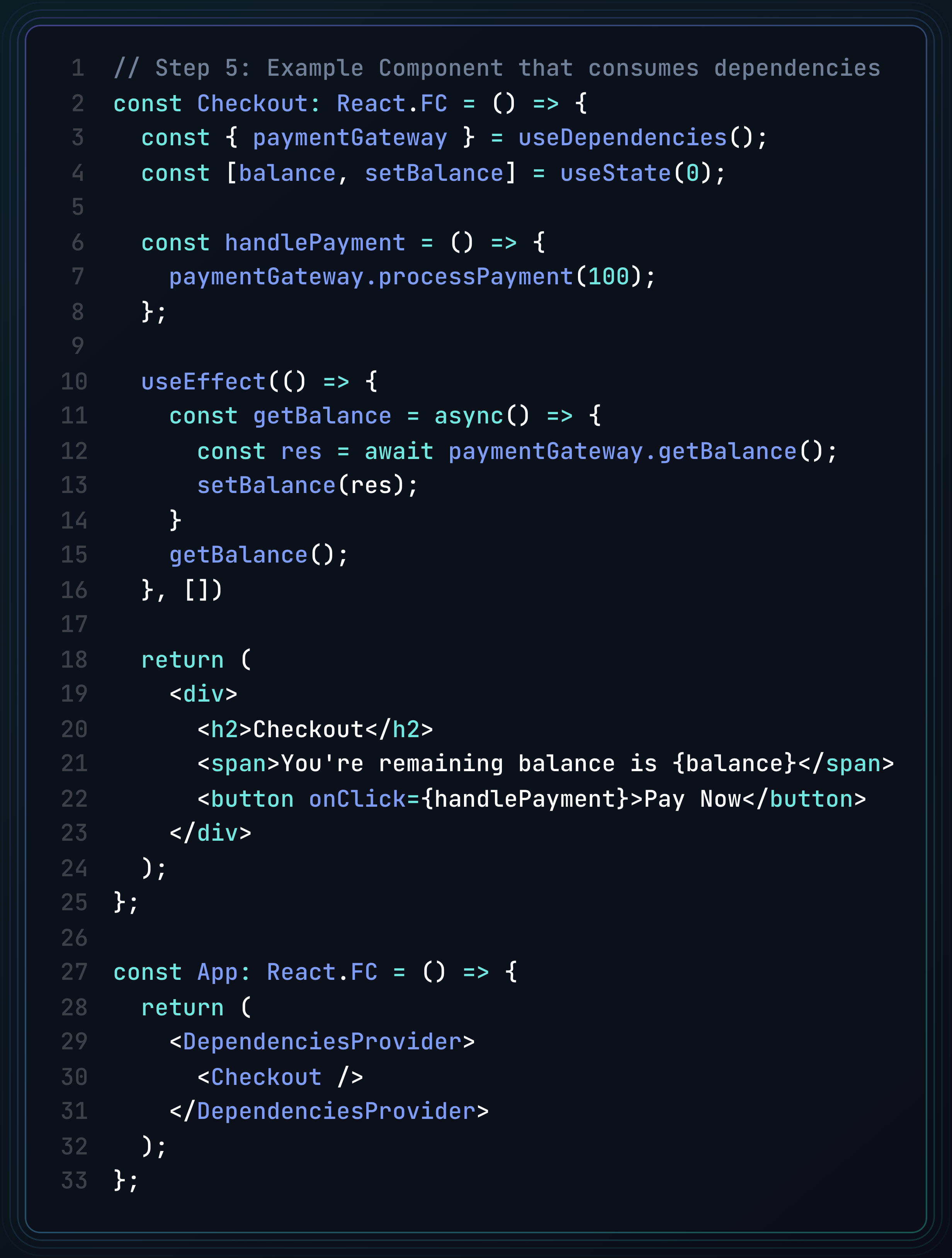Dependency Injection in React: A Practical Guide

Dependency Injection isn't just for backends—let's explore its power in React
Demystifying the D in SOLID
Who hasn’t heard of SOLID? Five letters, five principles—often enough to intimidate even the most eager juniors. But today, we’ll demystify one of those principles and show how it can transform your React projects.
The "D" in SOLID stands for the Dependency Inversion Principle—a concept often dismissed as backend-only. But guess what? It’s just as powerful on the frontend, especially with React. By applying Dependency Injection (DI) through classic React Context, you can simplify your architecture, reduce coupling, and make testing a breeze.
In this article, you’ll discover:
- How the Dependency Inversion Principle applies to React
- Why DI isn’t just for backend frameworks
- How to implement DI using React Context in your project
Let’s break the myth and harness the power of DI on the frontend.
Why Dependency Injection Matters in React
Dependency Injection (DI) isn't just a backend concept—it solves real-world frontend problems and keeps projects maintainable.
The Value of DI :
- Simplified Testing: Swap real implementations with mocks easily.
- Increased Flexibility: Components depend on interfaces, not implementations.
- Scalability: Reduces complexity as your project grows.
Real Life Use Case
Let's imagine that we have an E-commerce platform working with stripe payment system. We're asked to switch from Stripe to PayPal. In most codebase, a rewrite of all components is needed. Risking regression and needing to update all tests. With DI, simply create a new service and change it in the provider. No component or logic rewrites required.
Code Walkthrough
The first step is to define our interface capacities. In our example, we're going to need a payment service where we can check the balance and process payments.

Then, we're going to define the classes implementing this interface.

We create a context that will contain all our dependencies. It will act like a dependency container.

Lastly, we need to setup our application to work with our dependencies and we can use them in our components.

Injection will also help to simplify Unit Tests. We need to define a fake gateway and to inject it around our component.

You can find the complete example in odyssey-examples.
Conclusion
Dependency Injection in React using Context provides a clean and scalable way to manage dependencies in your application. By abstracting services and injecting them via context providers, you achieve a flexible architecture that enhances testability, modularity, and maintainability.
Key takeaways:
- Loose Coupling: Components depend on abstractions rather than concrete implementations.
- Improved Testing: Easily mock dependencies for unit and integration tests.
- Scalability: Easily switch or extend service implementations without modifying multiple components.
By incorporating DI into your React projects, you set a strong foundation for growth and maintainability. Try implementing it in your next project and experience the benefits firsthand!